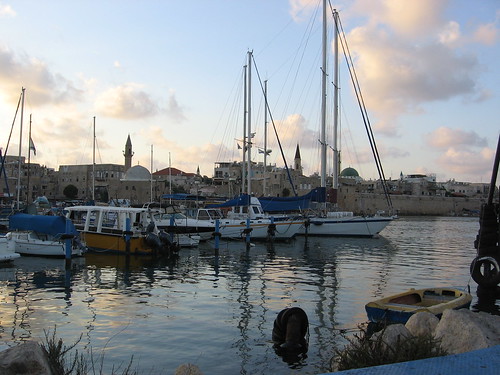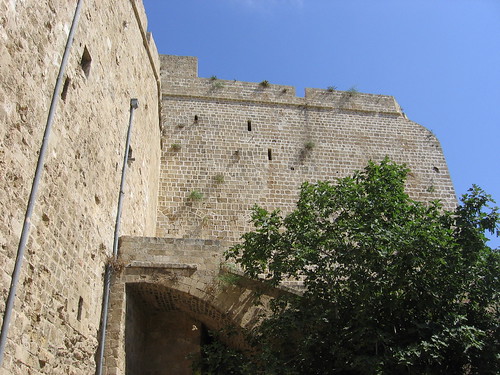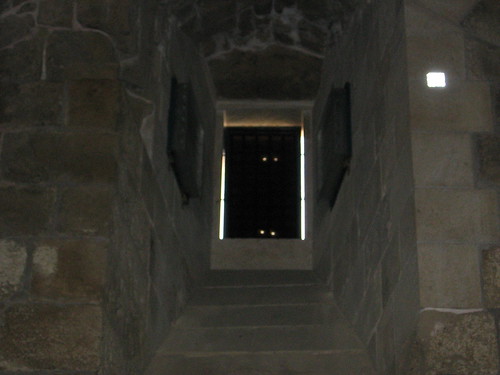This AP story promoting travel to Acre got forwarded around various archaeology lists the other day, and it got me thinking about my visit to Acre in 2009. I was digging at Tell es-Safi at the time (there's a Crusader castle there, too, called Blanche Garde, although the current excavations focus on the earlier periods), and four of us decided to take a trip to see a few sites in northern Israel, including Acre, Caesarea Maritima, and Megiddo. Acre was definitely a memorable place, and I'd say it's certainly worth a visit if you get a chance.The history of the site is, of course, fascinating. As the article mentions, it was an important Frankish port up until its destruction in the late 13th century by the Mamluks, as part of a larger campaign wherein they destroyed nearly every Mediterranean port in the Levant (Gaza being the one exception). Following that (and its abandonment in the 14th century), the city went through some ups and downs in the Late Islamic (Ottoman) period, and there are a few interesting stories there. Notably, it was briefly a holding of Fakhr ad-Din II, starting in 1610. Hartal (1997:111) describes that situation like this:
Following Fahr ed-Dîn's conquest of the city in 1610, he cleaned the harbor, renewed maritime trade, enlarged the city, and built some new buildings . . . In 1613, however, when the Ottoman Turks campaigned against him, Fahr ed-Dîn ordered the harbor to be filled in and had the city devastated.
I've always found this to be an amusing story, in a way. In 1610, he cleans the harbor and expands the city, and three years later fills the harbor in and destroys part of the city. There's also the story, mentioned in the AP article, of Napoleon's failed attempt to take the city in 1799, when it was controlled by Jazzar Pasha. Al-Jazzar (الجزار), incidentally, is not a very nice nickname; it means "the butcher." After Napoleon's unsuccessful siege, Jazzar Pasha understandably decided to fortify the city, using stone taken from the Crusader city as well as 'Atlit castle (Hartal 1997:112; generally, Hartal [1997] has a good, brief discussion of the post-Crusader architectural history of the city).Reading the story, though, I decided to go back and look at the photos I'd taken while I was there. Of course, I got some nice, scenic shots of the city, like this one:

Like most of coastal Israel, it really is a beautiful place. I definitely wouldn't mind spending more time there.I also took quite a few photos of buildings in the Crusader city, like this one:

This isn't the most interesting photo I've ever taken, but if you look at it closely you get some hints at the construction phases of the building.Then there's this one, taken in the refectory (dining hall) of the Hospitaller fortress in the old city:

Oh, hello there. . . didn't see you guys up there before.
1997 Hartal, MosheExcavation of the Courthouse Site at 'Akko: Summary and Historical Discussion. 'Atiqot 31:109-114.



